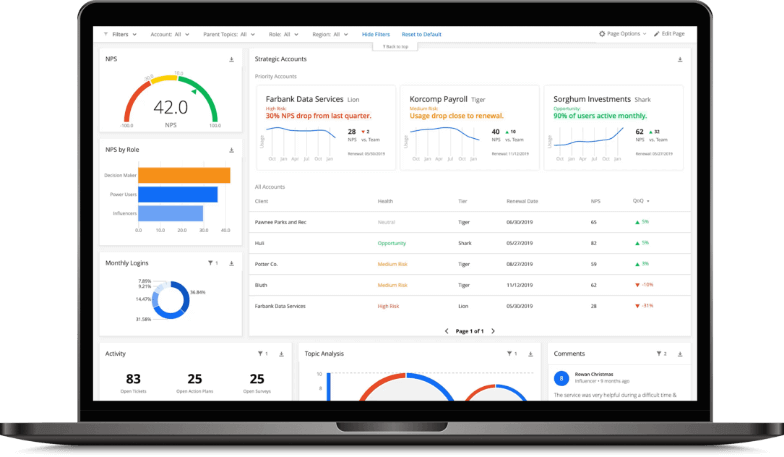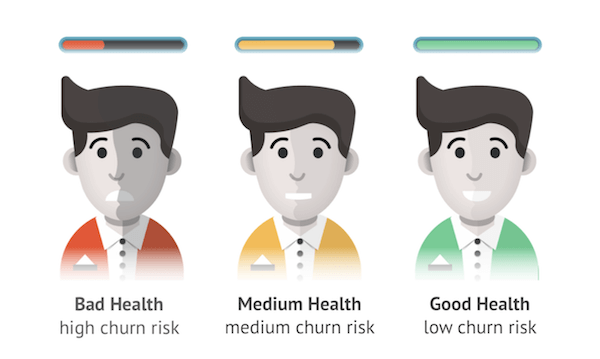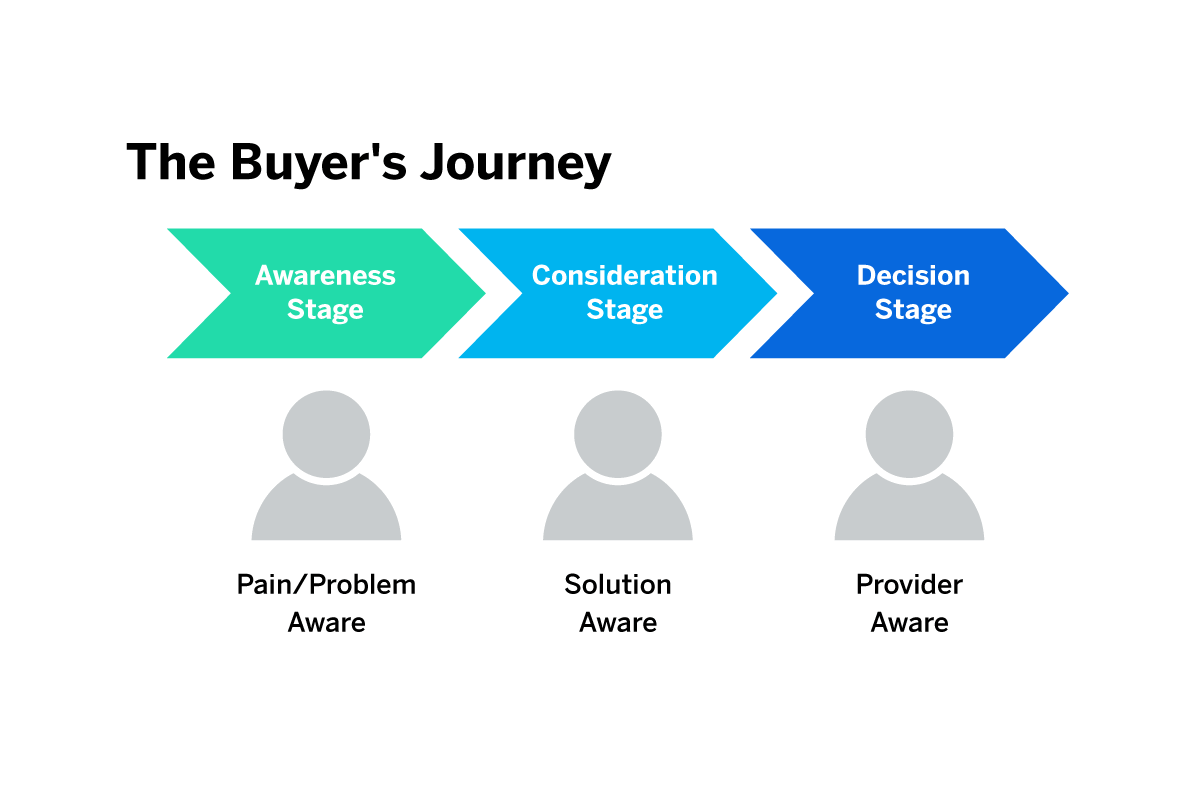You might be using several metrics to measure your customers’ interaction with your brand, but account health can often be left to your customer success leaders and account managers to estimate.
Health scores, however, can help you check what’s working in your customer relationship, what further support might be needed, and how your customer success team can build the relationship further. It also helps account managers to think about holistic account health, not just the stakeholders they interact with most often.
Free eBook: B2B CX for account management
What is a customer health score?
A customer health score is an understanding of how your customers measure up against an outcome you find valuable – for both existing and new customers. Metrics you might include in the judgment of your account “health” are:
- The length of time they’ve been a customer
- Rate of product usage or service usage (the number of products in a range that they have bought, for example)
- The number of times they’ve been successfully upsold a product or service
- How often they contact support
- How their account has grown over time (more products or services bought, for example)
- Their customer feedback
- Their engagement with the community (on social media, in feedback surveys or comments, in recommendations, and more)
- How often they participate in marketing efforts (such as giving references)
These are only some of the metrics you can use to build a picture of what your customer health scores look like. There are going to be many overlapping details across businesses, but personalization is important; each company’s understanding of “health” is likely to be different depending on its goals.
Your customer health score formula will take all of the metrics you find valuable and condense them into a score, with weighting given to each metric. Your scoring system will summarise all of your metrics’ data points and give you a simple way of understanding which customer relationships are “healthy” and which require some input from your customer success team.
Why is a customer health score important?
In general, it’s safe to say that gathering feedback and being able to measure your customers’ experiences and feelings is hugely important. It’s only when you have the fullest view of how your customers feel that you’ll be able to make positive changes to the way things work at your business.
More specifically, your customer health score is an efficient way of taking several metrics and viewing them at a glance. As customer health scoring is so personalized to each business’ goals and values, the scoring system helps customer success managers, and businesses generally, easily see where improvement might be needed.
This helps account managers and executives know where they have opportunities to grow accounts and increase revenue, or where to proactively take action to reduce the likelihood of accounts churning.
Why should businesses measure customer health scores?
It’s never been more important to listen to your customers, make them feel heard, and act on what you know they’re struggling with. In our 2022 Consumer Trends Report, we found that a huge 63% of consumers said companies need to get better at listening to their feedback, while 62% said that businesses need to care more about them.
Beyond that, though, there are a few key reasons why customer health scoring can be an incredibly useful tool:
1. Customer health scoring highlights patterns
Scoring customer health over time will show you trends and patterns that indicate successful CX strategies. If, for instance, customer health steadily improves, then you know the actions you’ve been taking are paying off.
2. Customer health scoring can help slow churn
If you have your finger on the pulse with customer health scores on a granular level, you’ll be able to identify churn before it even happens, and take proactive steps on a per-customer level to ensure they stay with you.
3. Customer health scoring uncovers your best customers
Being able to identify ‘healthy’ customers lets you build out a list of loyal users who you can use as brand ambassadors. That might be as simple as asking them to leave reviews of your product on third-party websites, but in general, a healthy customer is much more likely to support your business – and in more ways – than an unhealthy one.
How to measure customer health scores
Ok, so now you know what you’re dealing with, how do you actually calculate customer health score in a way that’s useful to your business? Well, creating a useful customer health score formula firstly involves establishing what you find valuable as a measurement, and how you will weight each useful metric to develop your overall score.
1. Determining valuable customer health score metrics
Collecting customer data across all your platforms, outreach channels and accounts is useful, but narrowing down precisely what “success” looks like is the best way of creating a meaningful health scoring system.
For example, you could select customer satisfaction or customer loyalty as an important factor. Here you might use their NPS and CSAT responses alongside the number of times they have contacted support within a given period. This can provide a helpful indication of whether customers are happy with your product or service.
2. Score customer health by applying weighting
Now you have your datasets, you need to apply weighting to properly calculate customer health scores. Which metrics are more valuable to your business, and which ones aren’t as helpful for determining account health?
As per the example above, while prioritizing NPS, CSAT, and Service Management metrics as key factors in the calculation of customer health, you might assign a lower weighting to the rate of customer engagement with user community forums.
The customer health score weighting system you’ve assigned can be scaled in any way that makes sense to you. You could choose a scale between 0 – 100, with scores from all your metrics assigned a plus or minus number on the scale.
3. Creating segmentation to separate “healthy” from “unhealthy”
Once you’ve clarified what you’re measuring and how important each customer health score metric is, your combined score for each customer needs to be broken down into “healthy” and “unhealthy.”
For example, scores from 75 – 100 could be “healthy”, 50 – 75 could be “at risk” and 0 – 50 could be “unhealthy”.
Whatever labels you give these groupings, it is critical to do some analysis with historical data to verify that customer behavior is leading to the outcomes expected – ie. customers in the unhealthy category are churning more or spending less over time than those in the healthy category.
What is a good health score?
Because the end scale of your customer health is chosen by you, there’s no one-size-fits-all way to define great customer health, other than to use common sense in that the top end of the scale is better than the lower end.
That said, there are a few different ways to categorize your customer health scores that make it easier to identify what’s good, what’s not, and what kind of action needs to happen next:
Customer health scoring: Numbered or percentage scale
As we’ve described, your end scale may naturally leave you with a numbered score that you can easily categorize into healthy or unhealthy ranges. In that instance, 75-100 might be what you decide is a healthy score.
But you might also want to look at percentages as a sum of several parts. In other words, you could grade the health of customers across a range of different vectors, like how many users make repeat purchases, general product usage, customer support inquiries, etc. – and create an overall percentage score based on the sum of those individual ones.
Customer health scoring: Grades
If it’s easier for stakeholders and decision-makers, you might also turn those numbered scores into lettered grades, just like your old school report card. If you take letters, A-F, you’ll have more categories, allowing for more nuance between various customer health profiles.
With that, you might still decide that say, grades A-C all describe good customer health, but that extra granularity might help you settle on more specific actions for each customer.
Customer health scoring: Categories
A simpler way to look at your customer health score is to simply bracket the results into ‘good’, ‘neutral’, and ‘bad’. You’ll lose some nuance when compared to the method above, but – depending on your goals – you might decide that it’s useful for you to focus on simpler, broader terms, rather than to get into the weeds of outlining six different approaches to dealing with customer health.
How to improve customer health scores
Once you’ve built out your customer health scores, the next step is to assign actions to take depending on how the health score for each customer is now and how it changes in the long term.
First, you need to make your scoring system clear to your customer success managers and the wider business. It’s helpful for customer service staff to know which customers might need more care, so make sure your customer health scoring system is easy to understand and access for all your team members.
You could also link your customer health score to your CRM to efficiently link all your data in one place.
Once a system for calculating a customer’s health score is understood, it is time for action. Customer health score improvement actions could include extending further marketing outreach or implementing improvements that remove any blockers to product adoption or usage.
Your customer success team will likely be a great help here to understand customer behaviors and resolve any issues. For example, if customers are frequently scoring low because they are often going to customer support with issues, there might be a product fix needed to help avoid this problem in the future.
By taking the actions above, you’ll already likely have improved customer health score across your accounts by making progress in areas that need work.
Further improving your customer health score may require taking a look at the entire customer journey, from onboarding to churn, to understand which of your measured metrics are the best indicator of success and customer retention.
Your customer health scoring system will also likely need updates over time. Your original assumptions about what metrics are useful or correlated might be an inaccurate prediction of customer churn, so you will need to keep a close eye on data trends to ensure it’s right.
Additionally, your customer base is likely to grow over time, and new needs and behaviors will appear that need to be captured.
Customer health score as part of a wider CX program
Your customer health score benchmarks and strategies for improvement are part of the ongoing process of creating a great customer experience.
Developing a CX program that takes customer health scoring into account alongside other factors is a good way to not only improve customer experience but augment business outcomes.
Your CX strategy should encompass complimentary account management activity, such as:
Creating customer retention strategies based on data
B2B customer churn is one of the key issues account managers and customer success teams will face when handling customer relationships. However, retaining customers over the long term can be achieved through sensible account management strategies based on data and action, designed to improve the customer experience continually.
Optimizing the buyer journey
Your B2B buyer journey is the make-or-break-it sales approach to potential customers. Understanding how to map it and take action on gaps can be the difference between a customer signing on and a potential buyer looking for an alternative partner.
Analyzing your win/loss ratio – and taking action to improve it
Understanding how and why your business is winning or losing customers is vital for ensuring long-term growth, building on success, and improving pain points to increase revenue and avoid customer churn.
Ultimately, it’s important to think of customer health score as just one part of a bigger picture. Health scores are a great way to identify customers and trends that need attention, but what’s vital is using the right tools to gather customer data in a way that will help you understand their entire journey.
Only then will you be able to identify broken experiences that might lead to churn – and lower health scores.

We’d encourage customer engagement, but that doesn’t just mean direct solicited feedback. If, for example, existing or new customers are complaining on third-party review sites or social media, then you must have eyes and ears on those channels.
Thankfully, in today’s business environment, those eyes and ears don’t have to be human, and the process doesn’t have to be time-consuming. A modern CX suite, like our own Customer Experience management platform, for instance, can do that legwork for you on a continuous basis – listening to conversations across mediums and channels to provide data and actionable insights.
That data, coming from multiple sources across the entire customer journey, will give your frontline agents the confidence and insight to ensure the relationship you have with your customer is healthy.
Free eBook: B2B CX for account management

